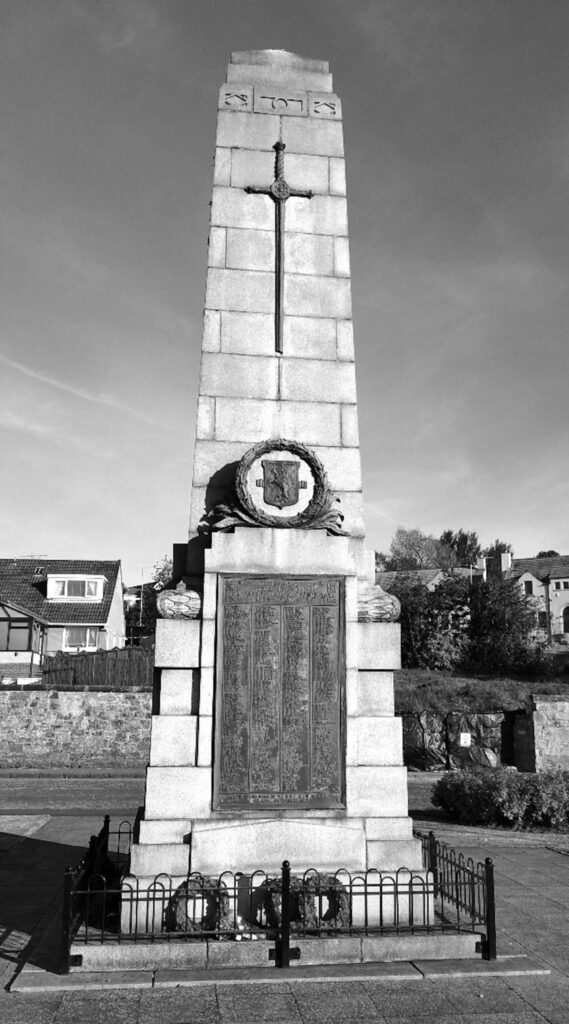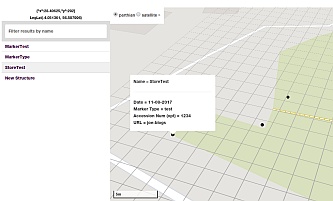About the Bo’ness War Memorial
The proposal to erect a memorial to those who made the ultimate sacrifice in the Great War was first suggested in 1919. A committee was formed but there were many difficulties to overcome and progress was slow.
However, the general feeling in the town was that Bo’ness should pay tribute to its war dead with the erection of a war memorial and even more so as memorials had sprung up in numerous burghs and hamlets in Scotland. Another committee was formed and a new appeal was launched in October 1922 when it was hoped that the townsfolk would support the fundraising events that were proposed.
By September 1923, the War Memorial Committee had visited several towns in the west of Scotland to view their war memorials. They agreed unanimously that the memorial in Blantyre “embodied their aims” and this is what they wanted for Bo’ness. This cenotaph had been designed by Messrs Galt & Barr, Bath Street, Glasgow. Mr Barr had visited Bo’ness and had inspected the two proposed sites, the area overlooking Church Wynd and a site at the Victoria Park. Mr Barr was asked to submit sketches and a price for construction in freestone and, alternatively, granite.
The committee had also compiled a list of names, many taken from church memorials and others submitted by the public. This list was made available for inspection at several premises in the town in preparation for the final list being sent to the architects. All additions, omissions or errors had to rectified and finalised by 29th February 1924. After that date no corrections could be made.
The memorial is constructed of Aberdeen silver grey granite, and consists of a pedestal and shaft 27 feet high. The contractors for the granite work were Messrs Scott & Rae, Glasgow, the bronze work was undertaken by Messrs Holmes & Jackson, Glasgow, and the builders were well known local builders Messrs Hardie & Sons, Bo’ness.
A bronze panel consisting of 398 names is on the north facing side, surmounted by a bronze wreath and sword in relief. At the top of the bronze panel the following words are engraved: “Salute the memory of these thy sons, who fought and laid down their lives in the Great War”. Underneath the names of the fallen is inscribed the now famous quote from Lawrence Binyon, “At the going down of the sun and in the morning we will remember them”.
The opposite elevation faces Stewart Avenue and bears the inscription “To our Glorious Dead 1914-1918”, with a bronze wreath and the Burgh coat of arms. The side panels contain the names of the various theatres of war that the Bo’ness men fought in.
The memorial was unveiled in fine weather before a large gathering of Bo’nessians and visitors on 12th July, 1924. The King’s Own Scottish Borderers, 1st Battalion, supplied the guard of honour, as Lieutenant-General Sir Walter Braithwaite, K.C.B., General Officer Commanding-in-Chief, Scottish Command, performed the unveiling ceremony with Provost Livingstone presiding.
Following Provost Livingstone’s address to the gathering and at the appointed time of 4.00 p.m., the Lieutenant-General advanced and said: “To the glory of God and to the memory of the men of Bo’ness and Carriden, I unveil this monument”. He then drew aside the Union flag to uncover the memorial which he later described as “a simple, dignified memorial, situated on a magnificent site”. The ceremony continued with speeches, prayers and a minute’s silence. The hymn “For all the Saints” was sung by the choir accompanied by the Band and immediately afterwards the buglers sounded the “Last Post” which was followed by the pipers playing “The Flowers of the Forest”. Later the buglers played the “Reveille”.
After the ceremony, over 200 ex-servicemen wearing their decorations paraded for inspection by Lieutenant Braithwaite headed by the combined British Legion and and Bo’ness Burgh Pipe bands.
The overall cost of the memorial was £1300 (this sum in 1924 is equivalent to £55000 in 2018). By the time the memorial was unveiled £1000 had been raised and further fund raising events continued up until 1926 to help contribute towards the outstanding £300.
Show the Map


